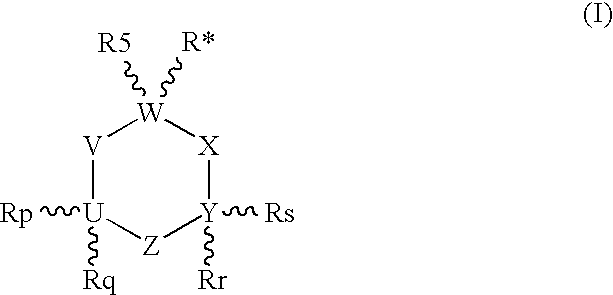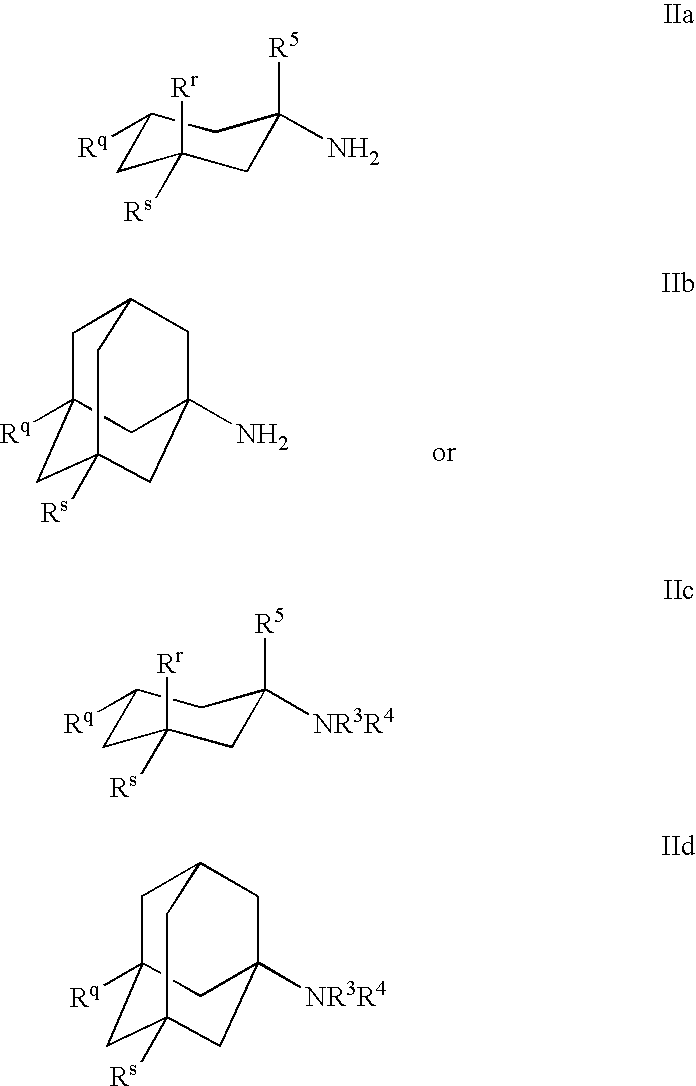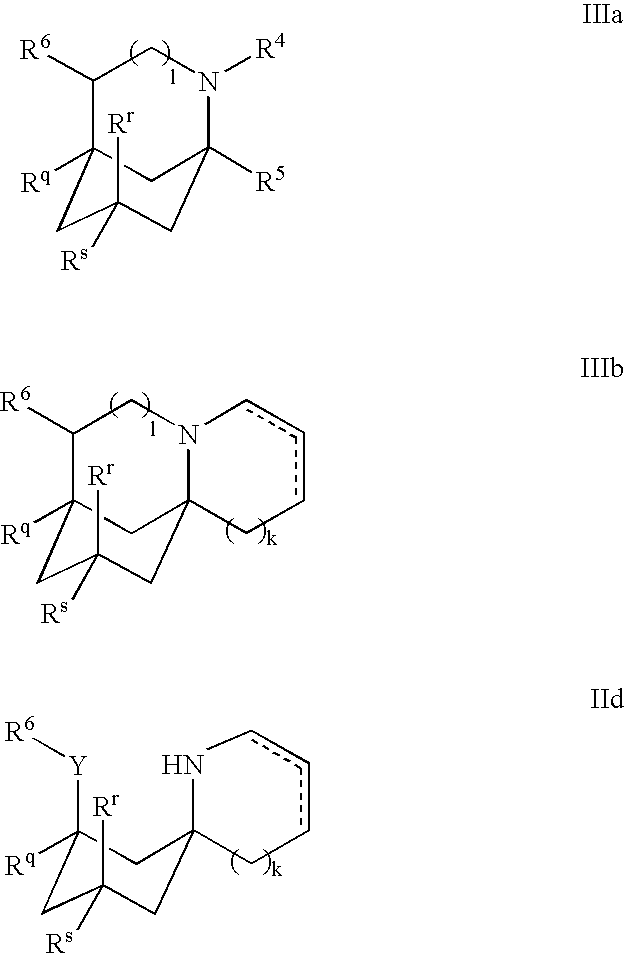1-Aminocyclohexane derivatives for the treatment of agitation and other behavioral disorders, especially those associated with alzheimer's disease
- Summary
- Abstract
- Description
- Claims
- Application Information
AI Technical Summary
Benefits of technology
Problems solved by technology
Method used
Image
Examples
therapy example 1
Effect of Memantine on Behavioral Outcomes in Patients Suffering from Moderate to Severe Alzheimer's Disease
[0269] Patients suffering from moderate to severe AD were randomized to placebo or 20 mg memantine daily for 28 weeks. Primary efficacy variables were the Clinician's Interview-Based Impression of Change plus caregiver input (CIBIC-Plus) and the Alzheimer's Disease Cooperative Study Activities of Daily Living Inventory modified for severe dementia (ADCS-ADL). Secondary efficacy variables included the Severe Impairment Battery (SIB) and Neuropsychiatric Inventory (NPI). Treatment differences between baseline and endpoint were assessed. Incomplete observations were imputed using the most recent previous observation (last observation carried forward—LOCF). Results were also analyzed using only the observed values, where missing values were not replaced (Observed Cases (OC) analysis). AD patients (N=252), (67 percent female, mean age=76 years), were randomized from 32 U.S. center...
example 1
Demographic Characteristics
[0277]
PlaceboMemantineSafety Population(n = 126)(n = 126)Male / Female47 / 7935 / 91Mean age, yrs76.375.9Race-Caucasian, n (%) 115 (91%) 112 (89%)Mean MMSE score (SD)8.05 (3.6) 7.72 (3.7) Mean SIB score (SD)68.3 (20.8)65.9 (22.5)Mean ADCS-ADL score (SD)27.4 (10.9)26.8 (9.2)
MMSE = Mini-Mental State Examination
SIB = Severe Impairment Battery
ADCS-ADL = Alzheimer's Disease Cooperative Study - Activities of Daily Living Inventory
[0278] Baseline scores, and results based on the LOCF and OC analyses for the efficacy variables were evaluated. The CIBIC-Plus ratings at endpoint (mean difference, 0.3, P=0.06) and week 28 (mean difference, 0.4, P=0.03) supported the effectiveness of memantine.
[0279] ADCS-ADL total scores at baseline were similar for both groups (27.4 for placebo and 26.8 for memantine). At endpoint and week 28, there was significantly less deterioration in the memantine group (LOCF, mean difference, −2.1, P=0.02, and OC, mean difference, −3...
therapy example 2
Effect of Memantine Administered in Combination with Donepezil on Behavioral Outcomes in Patients Suffering from Moderate to Severe Alzheimer's Disease
[0284] A 24 week, double-blind, placebo-controlled trial was conducted in moderate to severe Alzheimer's patients (N=404) treated with ongoing donepezil therapy and randomized to memantine or placebo. Behavioral symptoms were assessed using the NPI administered at baseline, Week 12 and the final visit (Week 24). The trial already had established benefits of memantine on functional, cognitive, and global measures. The statistical analysis was based on the ITT population using the last observation carried forward (LOCF) and observed case (OC) approaches.
[0285] Therapeutic benefits of combining memantine with a stable dose of a commonly used AChEI in patients with moderate to severe Alzheimer's disease (mean MMSE of 10 at entry) were observed on behavioral (NPI) measures. Of the 12 single item behavioral domains measured by NPI, memant...
PUM
| Property | Measurement | Unit |
|---|---|---|
| Mass flow rate | aaaaa | aaaaa |
| Mass flow rate | aaaaa | aaaaa |
| Fraction | aaaaa | aaaaa |
Abstract
Description
Claims
Application Information
 Login to View More
Login to View More - R&D
- Intellectual Property
- Life Sciences
- Materials
- Tech Scout
- Unparalleled Data Quality
- Higher Quality Content
- 60% Fewer Hallucinations
Browse by: Latest US Patents, China's latest patents, Technical Efficacy Thesaurus, Application Domain, Technology Topic, Popular Technical Reports.
© 2025 PatSnap. All rights reserved.Legal|Privacy policy|Modern Slavery Act Transparency Statement|Sitemap|About US| Contact US: help@patsnap.com



